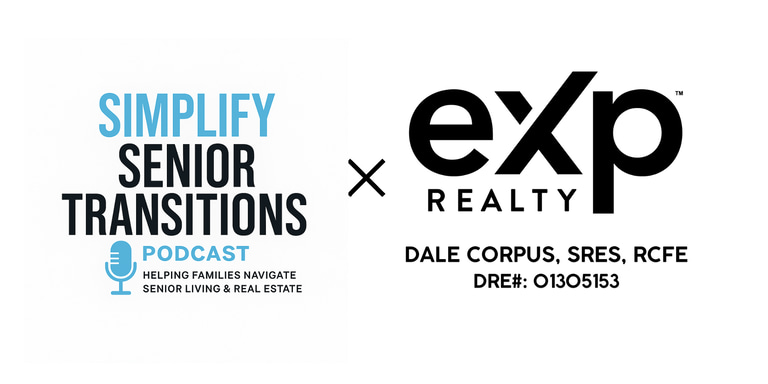When In-Home Care Stops Working: The Real Signs Your Parent Needs More Support
A Bay Area Guide to Making the Right Care Choice With Clarity, Not Guilt
Dale Corpus
11/13/20253 min read
Bay Area Caregivers: When Is In-Home Care Not Enough Anymore?
If you are caring for an aging parent in Contra Costa, Alameda, Santa Clara, San Mateo, San Francisco, Solano, or Napa county, chances are you’re running on fumes. You are part of the Sandwich Generation, balancing work, children, and the increasing needs of your loved one.
There is a moment in almost every caregiving journey when families face the hardest question:
"Is in-home care still the right option, or are we trying to force something that isn't working anymore?"
It’s an emotional tightrope walk. You want to honor your parent’s wish to stay home forever. Emotionally, keeping them home feels like the loving choice. But sometimes, real life intervenes, as it did for the Martinez family in San Mateo. After two years of caring for their dad, Carlos, whose dementia progressed rapidly, the breaking point came when Carlos wandered out the front door at 5:00 AM, barefoot, while the caregiver was briefly occupied.
That moment forced the Martinez family to see the truth: in-home care was no longer safe, sustainable, or fair to Carlos or to them.
If you are facing a similar crisis or feeling deep caregiver burnout, I want you to know: You are not failing, and you are not abandoning your parents. You are simply reassessing what is best now, which is exactly what loving children do.
I’m Dale Corpus, a senior transition specialist and real estate expert here in the San Francisco Bay Area, and this is another episode of Sandwich Generation Solutions, powered by the Simplify Senior Transitions Podcast.
Here's what you'll learn in this episode:
This episode provides real stories and expert insights to help you support your aging parents without burnout. We dive into how to identify when in-home care no longer scales with your parent’s needs. You’ll learn the major decision points related to safety, cost, and burnout, and we debunk common myths like thinking that moving means failure. Crucially, we review the practical alternatives available in the Bay Area, including assisted living, memory care, and financial programs.
The Breaking Point: Recognizing the Five Major Signs
Care Needs Exceed Safe Handling
If your parent requires two-person transfers, has frequent falls, is wandering, or exhibits aggressive or confused behavior due to dementia, the home environment may become unsafe for everyone involved.
24/7 Care Isn't Enough
Live-in caregivers can legally provide only about eight hours of actual hands-on care per day. If your parent needs constant redirection, nighttime supervision, or mobility assistance multiple times per hour, in-home care becomes both unsustainable and unsafe.
The Cost Becomes Higher Than Senior Living
This surprises many families. 24/7 in-home care in the Bay Area can easily cost $18,000 to $28,000 or more a month. In comparison, memory care typically costs $8,000 to $12,000 a month, meaning many families are paying significantly more for less support at home.
The Home Environment Works Against Them
Common challenges include multiple stairs, poor lighting, narrow bathrooms, or small hallways. Modifying the home may cost tens of thousands and still not be sufficient. This is often the point where families must face the challenge of downsizing and selling the senior's home.
Caregiver Burnout is Overwhelming
Burnout is the number one reason families transition. If you are losing sleep, always on alert, emotionally drained, and stretched between work, family, and your parent, you are human — not weak — and it's time to plan.
Choosing Care Options and Debunking Guilt
If you’re moving beyond in-home support, you are demonstrating love in action, not failure. Moving your parent when they need more structure, stimulation, and professional oversight often leads to stabilization and improved quality of life.
Care Options in the Bay Area:
Assisted Living
Best for falls, meal preparation, socialization, and medication management. Typical cost: $6,000–$8,000/month.
Memory Care
Best for dementia-related needs like wandering, sundowning, and behavioral changes. Typical cost: $8,000–$12,000/month.
Board and Care Homes
Small residential homes with personalized attention. Typical cost: $5,000–$9,000/month.
Skilled Nursing Facilities (SNFs)
For intensive medical needs and rehab.
Financial Resources
Programs like PACE, Master Care CalAIM, and IHSS can help prevent financial strain.
Confidence, Not Crisis: Your Four-Step Transition Framework
1. Safety First
Ask: Is my parent safe at home, even with caregivers?
2. Sustainability
Can your family maintain this for 6–12 more months?
3. Quality of Life
Where will your parent have better stimulation, structure, and rest?
4. Family Health
Your well-being matters too.
When the Martinez family moved Carlos into memory care in Foster City, the change was immediate. He stopped wandering, slept better, and started engaging in walking groups and music therapy — while his daughters returned to simply being daughters.
If your loved one is considering senior living and you need to figure out what to do with their home — downsizing, preparing it for sale, or navigating the transition — let’s talk.
Schedule a FREE consultation and learn more at:
👉 www.simplifyseniortransitions.com
Have a quick question?
📲 DM me anytime on Instagram: @soldbydale
Listen to the full Simplify Senior Transitions Podcast on YouTube, Spotify, and Apple Podcasts.
P.S. Got news or a story to share? Email us at dale.corpus@exprealty.com and you might be featured.
Remember to check out the transcript for deeper insights. Happy listening!
Watch The Podcast Here



Transitions Made Simple
Helping seniors transition with ease and peace.
📍 Serving the San Francisco Bay Area
📞 Get in Touch
📬 STAY INFORMED
Dale Corpus, SRES, RCFE
📱 925-380-1657
🕓 Available for free 15 min consultations by appointment
© 2025. All rights reserved.
Sign up for monthly senior transition tips & real estate insights.
